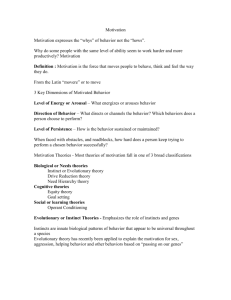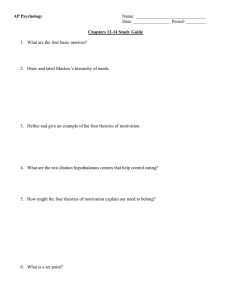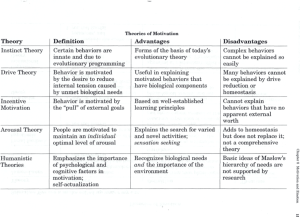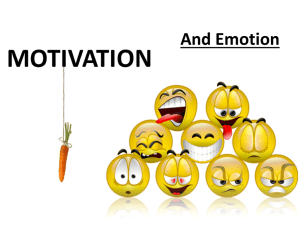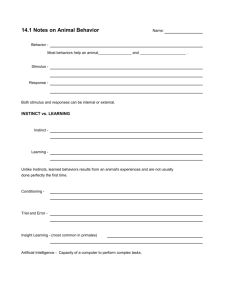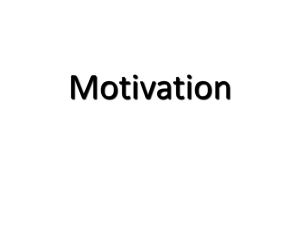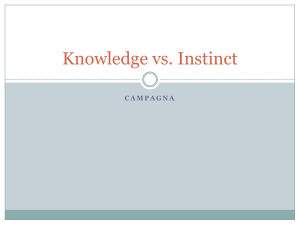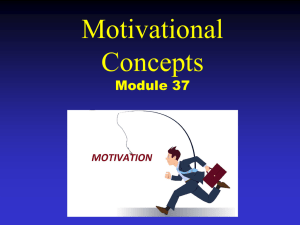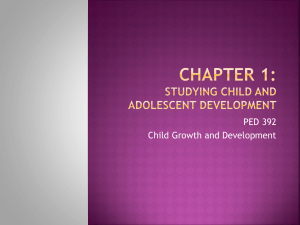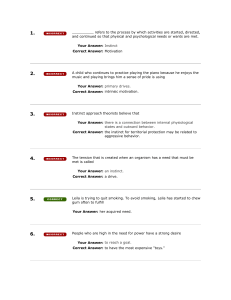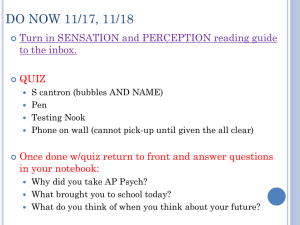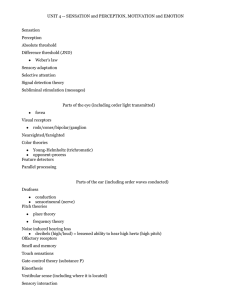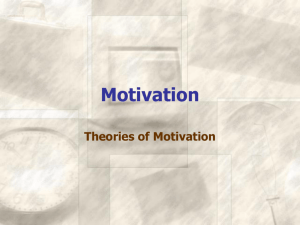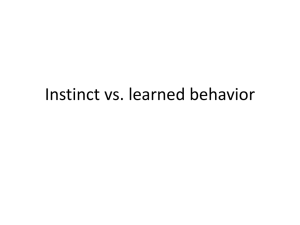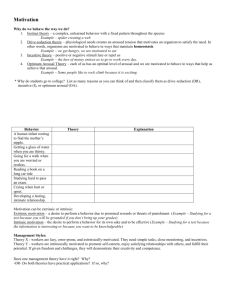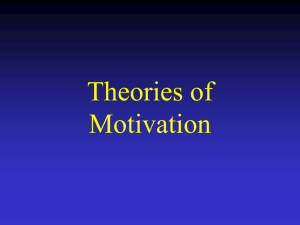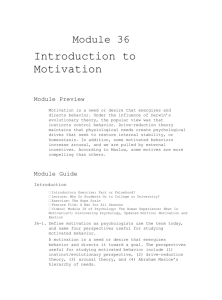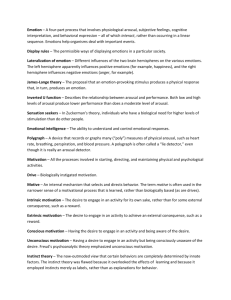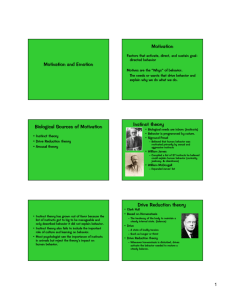Motivation Worksheet
advertisement
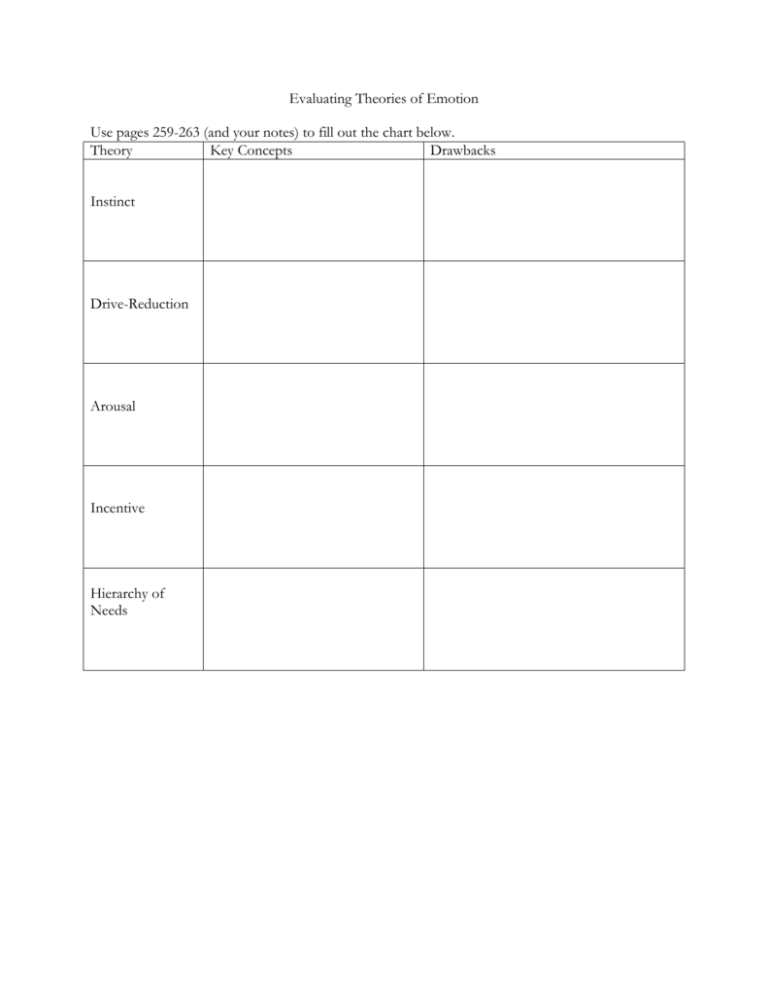
Evaluating Theories of Emotion Use pages 259-263 (and your notes) to fill out the chart below. Theory Key Concepts Drawbacks Instinct Drive-Reduction Arousal Incentive Hierarchy of Needs Applying Theories of Motivation In the history of psychology’s exploration of the motivating factors behind behavior, three theoretical perspectives have proven the most influential: instinct theory, drive reduction theory, and arousal theory. Instinct theory came out of the growing evolutionary understanding of the origins of behavior. It assumes that some complex behaviors are not learned and can be explained by genetic predisposition to the behavior. This approach is most often applied to explain species-typical behaviors. Drive reduction theory states that a physiological need creates a psychological state that pushes the organism to behave in ways that reduce the need. Arousal theory suggests that some behaviors are motivating because they increase arousal; that is, that they stimulate the organism or individual in some needed fashion. See the following chart for a list of motivated behaviors. For each behavior, identify which theories could be used to explain why the behavior occurs and describe how that theory would explain the behavior. Behavior A human infant rooting to find the mother’s nipple (rooting is when a baby turns its head towards anything that strokes its cheek or mouth) Getting a glass of water when you are thirsty Theories Explanations Going for a walk when you are worried or restless Working on a difficult jigsaw puzzle Studying hard to pass an exam Crying when hurt or upset Developing a lasting, intimate relationship *Adapted from The Critical Thinking Companion for Introductory Psychology by Jane Halonen and Cynthia Gray
